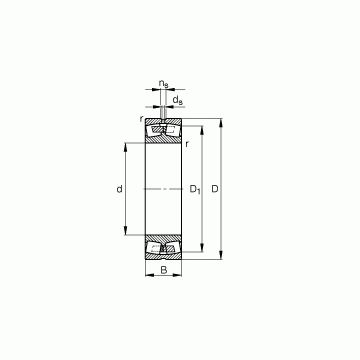Home> Company News> The Different Types & Sizes of Hydraulic Pumps.
- AddressNo.7001. XUEYUAN ROAD, NANSHAN DISTRICT,SHENZHEN,CHINA
- Factory AddressNo.7001. XUEYUAN ROAD, NANSHAN DISTRICT,SHENZHEN,CHINA
- Worktime9:00-18:00
- Phone(Working Time)0531-85064681
- Phone(Nonworking Time)0531-85064680
- Fax0531-85064680
Hydraulic systems play a crucial role in the functioning of various types of machinery, from construction equipment to manufacturing processes. These systems rely on hydraulic pumps to regulate fluid pressure and flow, which in turn controls the movement of mechanical components.
In this outline, we will discuss the different types and sizes of hydraulic pumps, as well as the factors to consider when selecting the right pump for a specific application. We will also cover the installation and maintenance of hydraulic pumps, and common issues that may arise with these systems.
By understanding the role of hydraulic pumps and how to select and maintain them properly, you can optimize the performance and efficiency of your hydraulic system, leading to increased productivity and reduced energy consumption.
Types of Hydraulic Pumps
Hydraulic pumps are crucial components of hydraulic systems, and they come in different types, each with unique features, advantages, and disadvantages. Understanding the different types of hydraulic pumps is essential in choosing the right pump for a specific application. The main types of hydraulic pumps are gear pumps, vane pumps, piston pumps, and screw pumps.
Gear pumps are among the most commonly used hydraulic pumps. They have two gears, a driving gear, and a driven gear that mesh together to create suction and discharge. The gears rotate in opposite directions, creating a flow of hydraulic fluid. Gear pumps are generally simple, efficient, and cost-effective, making them ideal for low-pressure applications. However, they have a lower volumetric efficiency than other pumps, and their noise level is higher.
Vane pumps use vanes or blades that slide in and out of the rotor slots to create suction and discharge. They are generally more efficient than gear pumps and have a higher volumetric efficiency. Vane pumps are suitable for medium-pressure applications and are commonly used in mobile hydraulic systems. They are also quieter than gear pumps and have a longer lifespan.
Piston pumps are the most versatile and powerful hydraulic pumps. They have pistons that move back and forth in a cylinder, creating suction and discharge. Piston pumps are capable of handling high-pressure applications and can achieve a high volumetric efficiency. They are also more expensive and complex than gear and vane pumps, making them ideal for demanding applications such as heavy-duty construction equipment, presses, and injection molding machines.
Screw pumps are less common than the other types of hydraulic pumps, and they use screws to create suction and discharge. They have a higher volumetric efficiency than gear pumps and are ideal for handling high-viscosity fluids such as oil or polymer. Screw pumps are also relatively quiet and have a longer lifespan. They are commonly used in marine applications and other heavy-duty applications.
In conclusion, each type of hydraulic pump has its unique features and advantages, making them suitable for different applications. The type of pump used in a hydraulic system depends on the system's requirements, the flow rate, pressure range, and available power sources. Understanding the different types of hydraulic pumps is essential in selecting the most appropriate pump for a specific application.
Sizes of Hydraulic Pumps
Hydraulic pumps come in different sizes and capacities to meet the varying demands of different hydraulic systems. The size of a hydraulic pump is typically determined by its capacity rating, which is expressed in terms of gallons per minute (GPM) or liters per minute (LPM). Generally, hydraulic pumps are classified into three sizes: small, medium, and large.
Small hydraulic pumps typically have a capacity rating of up to 5 GPM or 19 LPM. These pumps are commonly used in applications that require low fluid flow and pressure, such as small-scale industrial machinery and mobile equipment like skid steers and compact excavators.
Medium hydraulic pumps have a capacity rating between 5 and 25 GPM or 19 and 95 LPM. These pumps are used in a wide range of industrial and mobile equipment, including construction machinery, agricultural equipment, and manufacturing machinery.
Large hydraulic pumps have a capacity rating of over 25 GPM or 95 LPM. These pumps are used in heavy-duty industrial equipment, such as oil rigs, mining machinery, and large-scale manufacturing systems.
It's important to note that the size of a hydraulic pump should be chosen based on the specific needs of the hydraulic system it will be used in. A pump that is too small for the system will not provide adequate fluid flow and pressure, while a pump that is too large will waste energy and increase system costs. Therefore, selecting the right size of hydraulic pump is crucial for optimizing system performance and efficiency.
Selecting the Right Hydraulic Pump
When selecting the right hydraulic pump for a specific application, there are several factors to consider. The type and size of pump, as well as its capacity rating, must all be taken into account to ensure that the pump is suitable for the requirements of the hydraulic system.
The first consideration when selecting a hydraulic pump is the system requirements. The pump must be able to deliver the required fluid flow rate and pressure range for the specific application. This will depend on the type of machinery and the nature of the work being performed.
The power source available for the pump is also an important factor to consider. Some pumps are designed to be driven by electric motors, while others require a hydraulic motor or engine. The available power source will influence the type and size of pump that can be used.
Another important factor to consider is the pump's flow rate capacity. This is determined by the size of the pump's inlet and outlet ports, as well as the speed at which the pump rotates. A pump with a higher flow rate capacity will be able to deliver a larger volume of fluid in a given amount of time, which can be useful for applications where high flow rates are required.
The pump's pressure rating is also an important consideration. This is the maximum pressure that the pump can generate and sustain without sustaining damage or malfunctioning. The pressure rating must be sufficient to meet the requirements of the hydraulic system and the specific application.
Finally, it is important to consider the environment in which the pump will be used. For example, pumps used in harsh or corrosive environments may require specialized coatings or materials to prevent corrosion and damage.
Overall, selecting the right hydraulic pump for a specific application requires careful consideration of the system requirements, available power source, flow rate capacity, pressure rating, and environmental factors. With the right pump, hydraulic systems can be optimized for improved performance and efficiency.
Installation and Maintenance
When it comes to installing a hydraulic pump, proper installation is critical to ensure the pump operates effectively and efficiently. Incorrect installation can result in decreased performance, equipment damage, and even personal injury. Here are the steps required to install hydraulic pumps properly:
-
Choose the right pump: The first step in installing a hydraulic pump is to choose the right pump for the application. Consider the flow rate, pressure range, power source, and other system requirements to ensure you select the appropriate pump.
-
Mount the pump: Once you have selected the right pump, mount it securely in a location that allows easy access for maintenance and inspection. The pump should be mounted on a stable surface and secured with bolts or other appropriate hardware.
-
Connect the hoses: Connect the hydraulic hoses to the pump using the appropriate fittings and connectors. It is important to ensure the hoses are properly rated for the system pressure and flow rate.
-
Install the filter: Install a filter between the reservoir and the pump to remove any contaminants from the hydraulic fluid.
-
Fill the reservoir: Fill the hydraulic reservoir with the appropriate hydraulic fluid and ensure it is at the correct level.
-
Prime the pump: Prime the pump by filling the inlet port with hydraulic fluid and turning the pump shaft by hand to ensure the pump is properly lubricated.
-
Adjust the flow rate and pressure: Adjust the flow rate and pressure to the appropriate settings using the pump controls.
-
Test the system: Finally, test the system to ensure it is operating correctly and there are no leaks or other issues. Conduct regular maintenance and inspections to ensure continued optimal performance.
Proper installation of hydraulic pumps is crucial for optimal system performance and efficiency. Taking the time to install a pump correctly can prevent costly equipment damage and downtime.
Common Issues and Troubleshooting
Hydraulic pumps are critical components of hydraulic systems, and their proper functioning is essential for optimal system performance. However, like any machinery, hydraulic pumps can experience issues that affect their performance. In this section, we will discuss common issues that can arise with hydraulic pumps and provide troubleshooting tips to help identify and resolve them.
Common Issues with Hydraulic Pumps
-
Leaks: Hydraulic pumps can develop leaks due to worn-out seals or damaged gaskets. These leaks can lead to a loss of hydraulic fluid, reduced pump efficiency, and increased system downtime.
-
Overheating: Hydraulic pumps can overheat due to excessive system pressure or prolonged operation. Overheating can cause pump damage and lead to system failure.
-
Cavitation: Cavitation occurs when air bubbles form in the hydraulic fluid and collapse, creating high-pressure shock waves that damage pump components. Cavitation can result from improper pump installation, worn-out components, or low fluid levels.
-
Improper flow rate or pressure settings: Incorrect flow rate or pressure settings can lead to reduced pump efficiency, decreased system performance, and increased energy consumption.
Troubleshooting Tips
-
Check for leaks: If you suspect a leak in your hydraulic pump, perform a visual inspection of the pump and its components. Look for signs of hydraulic fluid on the pump body or the ground around the pump. If you find a leak, identify the source of the leak and replace the damaged component.
-
Monitor system pressure and temperature: Keep a close eye on system pressure and temperature. If you notice excessive pressure or temperature, shut down the system immediately and inspect the pump and system components for damage.
-
Address cavitation issues: If you suspect cavitation, check the hydraulic fluid level and ensure the pump is properly installed. Check the pump components for signs of wear or damage and replace any damaged parts.
-
Check flow rate and pressure settings: Ensure the pump is set to the correct flow rate and pressure range. Adjust the settings as necessary, and monitor the pump's performance to ensure optimal efficiency.
-
Perform regular maintenance: Regular maintenance is critical to the longevity and optimal performance of hydraulic pumps. Follow the manufacturer's recommended maintenance schedule, and inspect the pump and system components for signs of wear or damage.
By identifying and addressing common issues with hydraulic pumps, you can ensure optimal performance and reliability of your hydraulic system.
Next, we will discuss the importance of selecting the right type and size of hydraulic pump for your specific application.
Conclusion
In conclusion, selecting the right type and size of hydraulic pump is crucial for optimal performance and efficiency in industrial machinery. By understanding the different types and sizes of pumps, as well as the factors to consider when selecting the appropriate pump for a specific application, you can ensure that your hydraulic system operates at its best. Regular maintenance and inspection of the system components, including the pump, is also essential to prevent common issues and troubleshoot any problems that may arise. By investing in hydraulic system upgrades and maintenance, you can ensure the long-term success and reliability of your machinery, ultimately leading to increased productivity and profitability.


 232/500 KCW33+H32/500 SKF Spherical Roller Bearings
232/500 KCW33+H32/500 SKF Spherical Roller Bearings 23128-E1A-M FAG Spherical Roller Bearings
23128-E1A-M FAG Spherical Roller Bearings